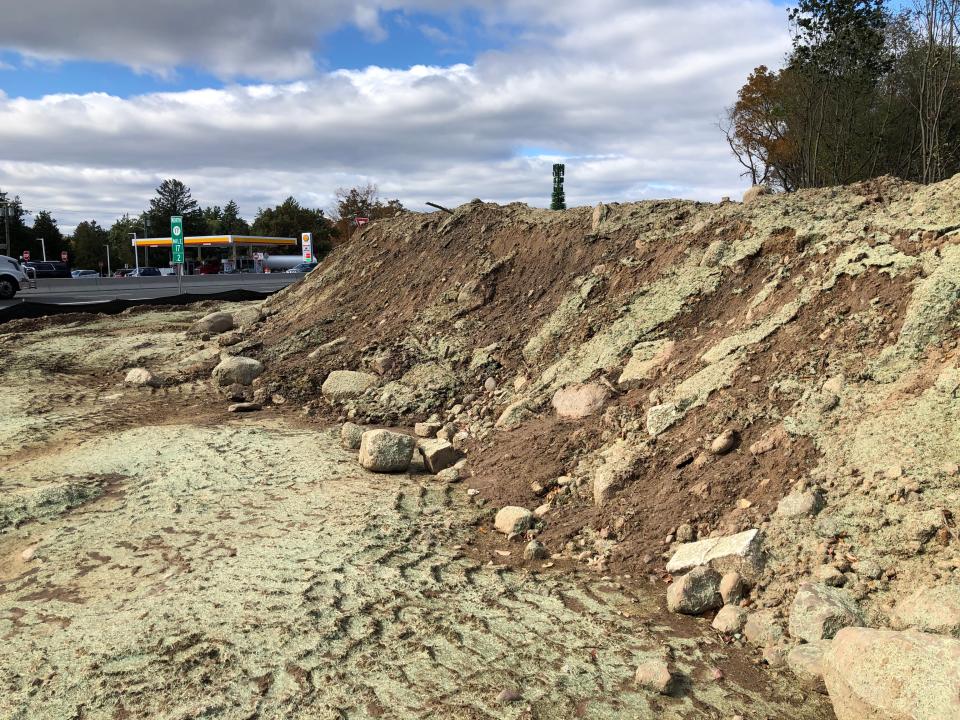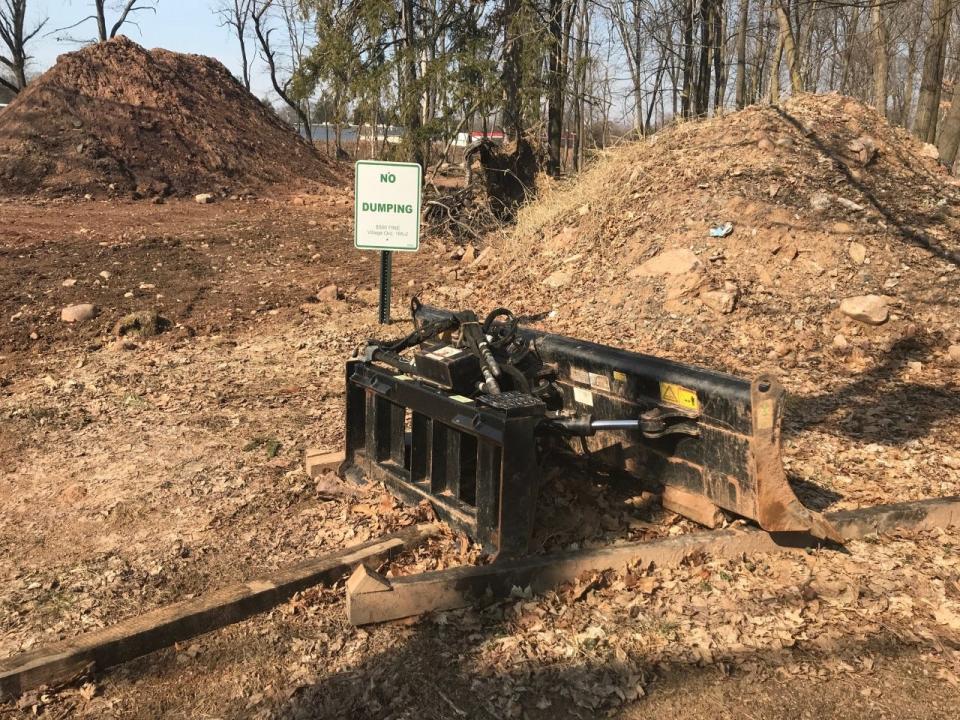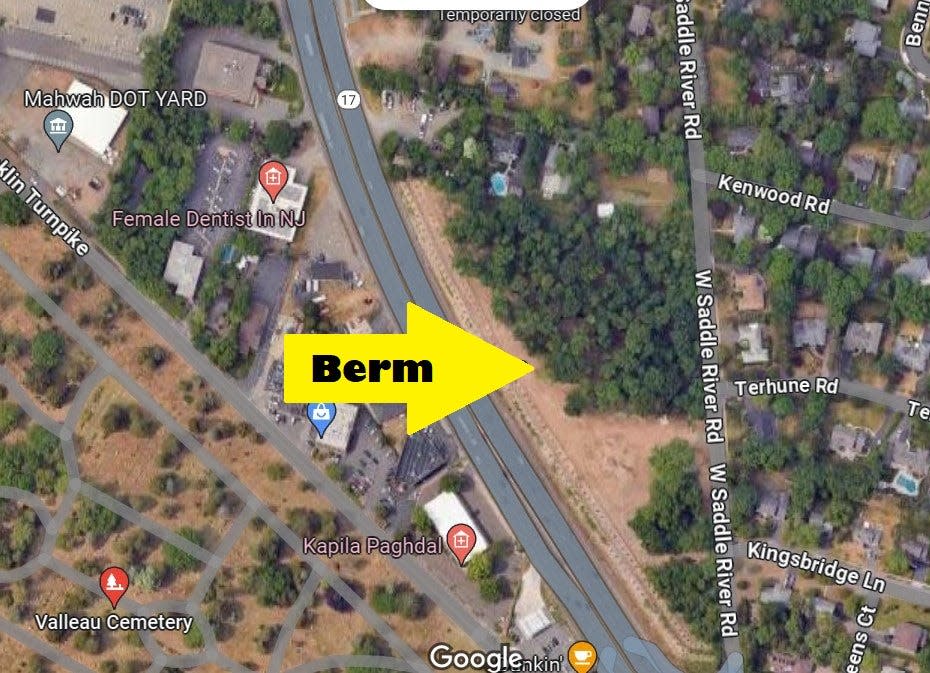State orders testing of soil Ridgewood used to build Route 17 berm, piled at historic site
RIDGEWOOD — The New Jersey Department of Environmental Protection has charged the village with allowing contaminated dirt to be used to build a 1,100-foot-long berm along Route 17 north from 2019 to 2020.
The village was also charged by the DEP with allowing piles of the contaminated dirt to be deposited on the adjacent historic Schedler house property immediately east of the berm.
"Ridgewood Village's documented use of contaminated fill at this site is in violation of the Solid Waste Management Act," said a five-page letter dated Dec. 11, 2023, and signed by Tom Farrell, chief of the Bureau of Solid Waste Compliance & Enforcement.

The village has been ordered to submit sampling and an analysis plan within 60 days.
The order came in response to a complaint or inquiry from a resident near the Schedler-Zabriskie House property at 460 W. Saddle River Road, said Village Manager Keith Kazmark.
"There is no immediate safety threat to the residents, or they would have ordered the property closed," Kazmark said Thursday. "We will meet all the DEP testing requests,"

The 7-acre site was approved for installation of an artificial turf sports field in September. However, Farrell's letter advises that dirt piles deposited on the historic property "may not be suitable base material for the artificial turf."
"Should any of the fill deposited outside the berm be removed from the property, appropriate characterization for same is needed to ensure that use or disposal is consistent with NJ DEP regulations," Farrell said.
More: Historic Ridgewood movie theater, a fixture since 1932, to close its doors
North Jersey: Can flood-prone Route 23 be elevated near the river? Local officials are hopeful
The order was the subject of protests at Wednesday's Village Council meeting, where residents blamed the current members of the council. However, the berm was constructed during the administrations of Mayors Ramon Hache and Susan Knudsen as a noise/security barrier for the historic site. The common denominator throughout its construction was the oversight of Village Engineer Christopher Rutishauser, to whom the Dec. 11 letter is addressed.

The letter lists the sources of the dirt, the village's testing records and further information required. The sources include:
152 S. Broad St. (former Brogan Cadillac site): 8,000 cubic yards "used as the bulk of the material for the berm construction" from "a site that underwent remediation." Testing of 14 samples was done in 2018 by Peak Environmentals. The DEP said 20 samples would be more appropriate, plus testing of more than four or five samples for various contaminants, or an explanation of why the tests were reduced.
Bergen Community College: 500 cubic yards for use at the Schedler site. The fill was tested in 2019 by ANS Consultants. The letter said the Schedler site "was not undergoing a remediation approved by a Licensed Site Remediation Professional" at the time, and that "no information has been presented to justify bringing in contaminated fill to a site that may have been uncontaminated prior to the importation of the subject fill materials."
533 Wyndmere Ave.: 320 cubic yards from a residential home addition, used as "grading fill for the Schedler project." Testing was done by ANS Consultants in May 2021. The DEP is seeking a Non-Conformance Summary or lab report to verify testing integrity and a description of the area where soils were distributed.
DeBoer Avenue and Route 208 water main installation: 200 cubic yards. Testing was done by Aqua Pro-Tech Laboratories at an unspecified date. "There was no evaluation of the appropriateness of bringing in contaminated fill to the 4560 W. Saddle River Road site," the DEP said. The location where the fill was distributed is also questioned.
Jefferson Street, William Street and Salem Lane water main replacement: 1,700 cubic yards. One sample from each street was tested by Aqua Pro-tech Laboratories in September 2020. The DEP is asking for a Non-Conformance Summary to document the integrity of the analytical results.
Ridgewood Water Company Spoil Pile: 300 cubic yards from water main break repairs was initially sampled by Eurofins in December 2016 and resampled in January 2021 by SGS North America. The letter questions elevated test results from both samples.
The circa-1847 Schedler-Zabriskie House was nationally landmarked in November 2019 as one of the last wood-frame farmhouses in the county. The property was nationally landmarked separately in 2020 for its connection to Revolutionary War activity in the area near Old Paramus Church where George Washington maintained a headquarters. An attempt was made to landmark a 200-year-old tree south of the house last year, but it was stymied by the village.
This article originally appeared on NorthJersey.com: NJ DEP orders Ridgewood to test soil used to build Route 17 berm

